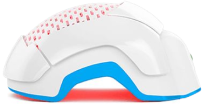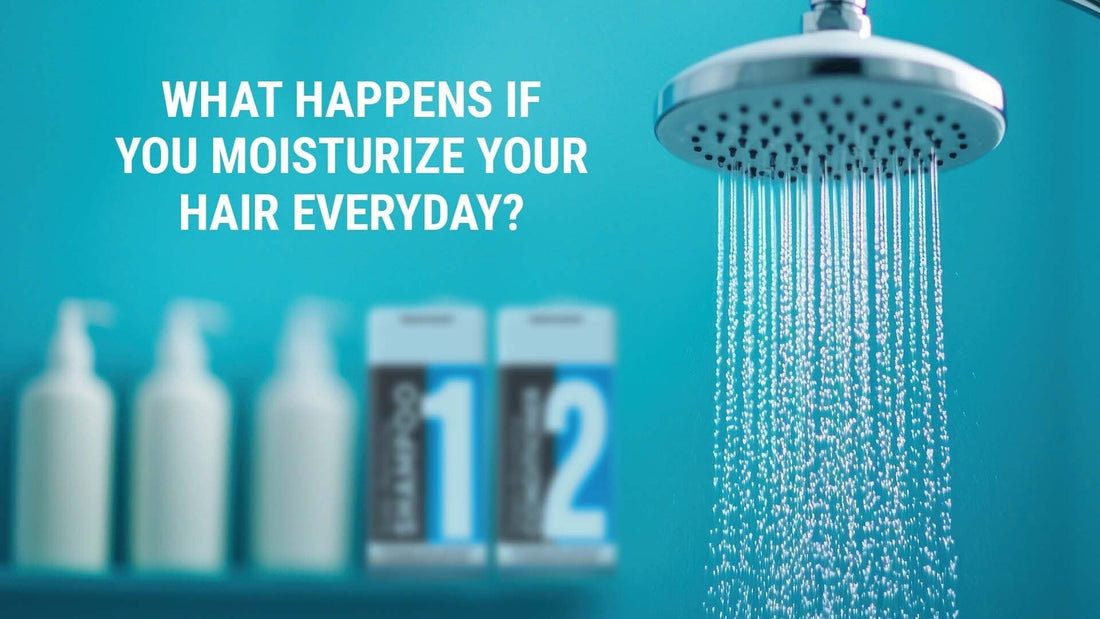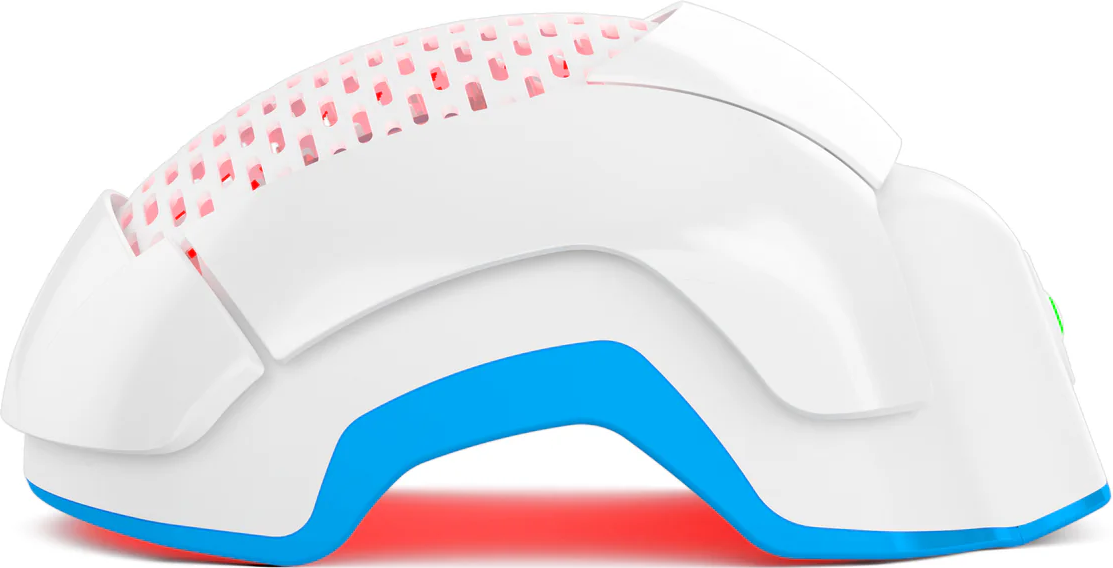Most people don’t moisturize their hair enough. But some are moisturizing like their lives depend on it — every single day, with the same heavy-handed routine, and zero thought about whether their strands are saying “thanks” or “please stop.” The truth is what happens if you moisturize your hair every day isn’t the same for everyone. For some, it’s a rescue plan. For others, it’s a silent recipe for limp, greasy hair with zero backbone.
The good news: moisturizing isn’t the problem. The way you do it might be. Different hair types, porosities, and styling habits have different moisture needs. Slapping on products daily without knowing your hair’s actual relationship with hydration is how you slide into moisture overload — stretchy strands, zero volume, and that weird mushy feel no serum can fix.
This article isn’t here to shame you or sell you something. It’s here to answer one thing clearly: what really happens if you moisturize your hair every day — the pros, the cons, and how to get the benefits without wrecking your strands in the process. Let’s make your moisture routine work with your hair, not against it.
Why Does Hair Need Moisture?
Moisture isn’t a luxury for your hair — it’s structural survival. Water keeps the hair shaft elastic, resilient, and less likely to snap under tension. Without it, strands dry out, roughen up, and break before they even get to flaunt their length. And no — oils aren’t moisture. They lock it in, sure, but they don’t hydrate on their own.
Different textures need different levels of hydration. Curly and coily types? They’re naturally drier because oils struggle to travel down those spirals. Straight hair retains moisture better — but even then, heat styling and harsh cleansers can strip it fast. There’s no one-size-fits-all answer to how often you should moisturize your hair. It depends on what’s growing out of your scalp.
Your hair's red flags for dryness are usually loud: frizz that laughs at serums, split ends that multiply like bad decisions, tangling for sport, dullness that no product fixes, and snapping with every pass of a comb. These aren’t cosmetic issues — they’re signs your strands are begging for actual hydration. Not gloss. Not grease. Moisture.
Benefits of Moisturizing Hair Every Day
Daily hair moisturizing isn’t automatically excessive — when it’s done right. Depending on your hair type and environment, it can keep things healthy, flexible, and genuinely manageable. Below are the key benefits, broken down without fluff.
1. Prevents Dryness and Brittleness
Moisturizing daily helps your strands stay flexible and less prone to trauma. Hair that’s hydrated bends and bounces. Dry hair snaps — fast. When your routine involves moisture that actually penetrates (think water-based sprays, not just oils), you build a protective buffer against friction, heat, and environmental damage.
Over time, daily hydration can reduce split ends and breakage, especially if you use tools regularly or live in a dry climate. But it’s not about quantity — it’s about quality. The right daily hair hydration routine hydrates without weighing you down or gumming up your scalp.
2. Improves Hair Elasticity
Elasticity is how much your hair can stretch without breaking. Moisture plays a direct role in that. Dehydrated hair is stiff — it snaps under tension. Hydrated hair, on the other hand, can handle styling, twisting, brushing, and detangling with less fallout. That matters more than most realize.
Daily moisturizing — if balanced with occasional protein treatments — helps reinforce this flexibility. You’ll lose less hair during styling because your strands don’t snap under pressure. And no, breakage from manipulation isn’t “normal.” It’s a sign your strands are too dry or too soft. Moisture helps control both ends of that spectrum.
3. Reduces Frizz and Tangles
Frizz isn’t about rebellion. It’s about raised cuticles, rough textures, and lack of water. When your hair is properly hydrated, the cuticle layer stays flat, which reflects light better and tangles less. And no, your $40 anti-frizz serum won’t do this alone.
Daily moisture helps calm down static, knots, and flyaways. Tangling often happens when dry strands rub together and stick. Moisturized hair separates and glides, making detangling less of a challenge. The trick is maintaining the right moisture balance — not soaking your strands into mush.
4. Enhances Shine and Softness
There’s a difference between greasy and glossy. Moisture gives hair a natural shine — the kind that comes from a healthy cuticle layer and well-fed shaft. If your hair feels rough or straw-like no matter how many products you layer, odds are it’s dry at its core.
Moisturized hair looks vibrant, feels soft, and doesn’t need constant “taming.” Plus, with the right best daily hair moisturizers, softness comes without buildup. You shouldn’t have to trade volume for silk. The best products hydrate, rinse clean, and support natural shine — not mimic it with fake gloss.
5. Helps Maintain Curl Definition (For Curly Hair)
Curly hair and moisture is non-negotiable. Curls lose water faster than straight hair, and daily moisturizing is often the only way to keep them from collapsing into frizz or puff. Hydrated curls hold shape, clump better, and resist tangling. Dry curls unravel and snap.
Moisturizing natural hair daily with a leave-in conditioner or mist supports curl definition and helps keep styles intact longer. Just don’t confuse moisture with heavy creams. A solid daily use of leave-in conditioner delivers hydration and slip without smothering your coils.
Can Moisturizing Hair Everyday Be Bad?
Yes — but it depends. Is it bad to moisturize your hair every day? Not inherently. But moisturizing without considering your hair’s porosity, oil levels, or product build-up? That’s where it turns. Fine or oily hair usually doesn’t need daily hydration unless it’s been chemically treated. Coily, dry, or porous hair types often do — but only with the right kind of moisture.
Over-moisturizing hair symptoms are real: limp strands, mushy texture, frizz that gets worse with every product, and hair that stretches like gum before breaking. That’s called moisture overload — and it happens when you skip protein treatments or layer too much product without cleansing properly.
To stay on the safe side, assess your hair regularly. Is it snapping? Getting greasy faster? Falling flat? If yes, scale back. If not — you’re probably fine. This isn’t about rules. It’s about reading the signs your hair gives you.
How to Moisturize Hair the Right Way
Moisturizing daily can be great — or completely useless — depending on how you do it. The right method, the right product, and the right frequency all matter more than the calendar.
1. Choose the Right Moisturizer for Your Hair Type
Fine hair needs lightweight mists or aloe-based moisturizers. Dense, curly hair benefits more from creamier leave-ins or milks. Don’t pick based on hype — pick based on porosity, texture, and how fast your hair loses water.
2. Use the Right Amount of Moisture
More product doesn’t mean more hydration. Start small. Focus on mid-lengths to ends. If your scalp’s drowning or your roots flatten after day one, you're overdoing it. A few pumps of mist or dime-sized dollop is often enough.
3. Seal in Moisture with Oils or Serums
Water-based products evaporate. Lock them in with a sealing oil like jojoba, argan, or grapeseed. Don’t mix 10 oils like a DIY witch — keep it simple. Oils don’t hydrate. They just help you hold what you’ve already added.
4. Balance with Protein Treatments
Hydration is one half of hair strength. Protein is the other. Without it, your hair goes soft, stretchy, and eventually breaks. If you moisturize daily, include a protein treatment every 2–4 weeks to maintain structure.
Conclusion
Moisturizing your hair every day can make all the difference — or make a complete mess of things — depending on how, what, and why you’re doing it. When done right, it supports elasticity, shine, softness, and fewer breakage battles. But overdo it, skip protein treatments, or ignore your hair type, and you're signing up for limp, overworked strands that feel like wet spaghetti. The real move is to pay attention. Moisture isn’t magic — it’s maintenance. Use the right products, read your hair’s signals, and build a daily hair hydration routine that actually earns its place in your day. Hydrated hair is healthier hair — but only when it’s handled with sense, not just product.






















